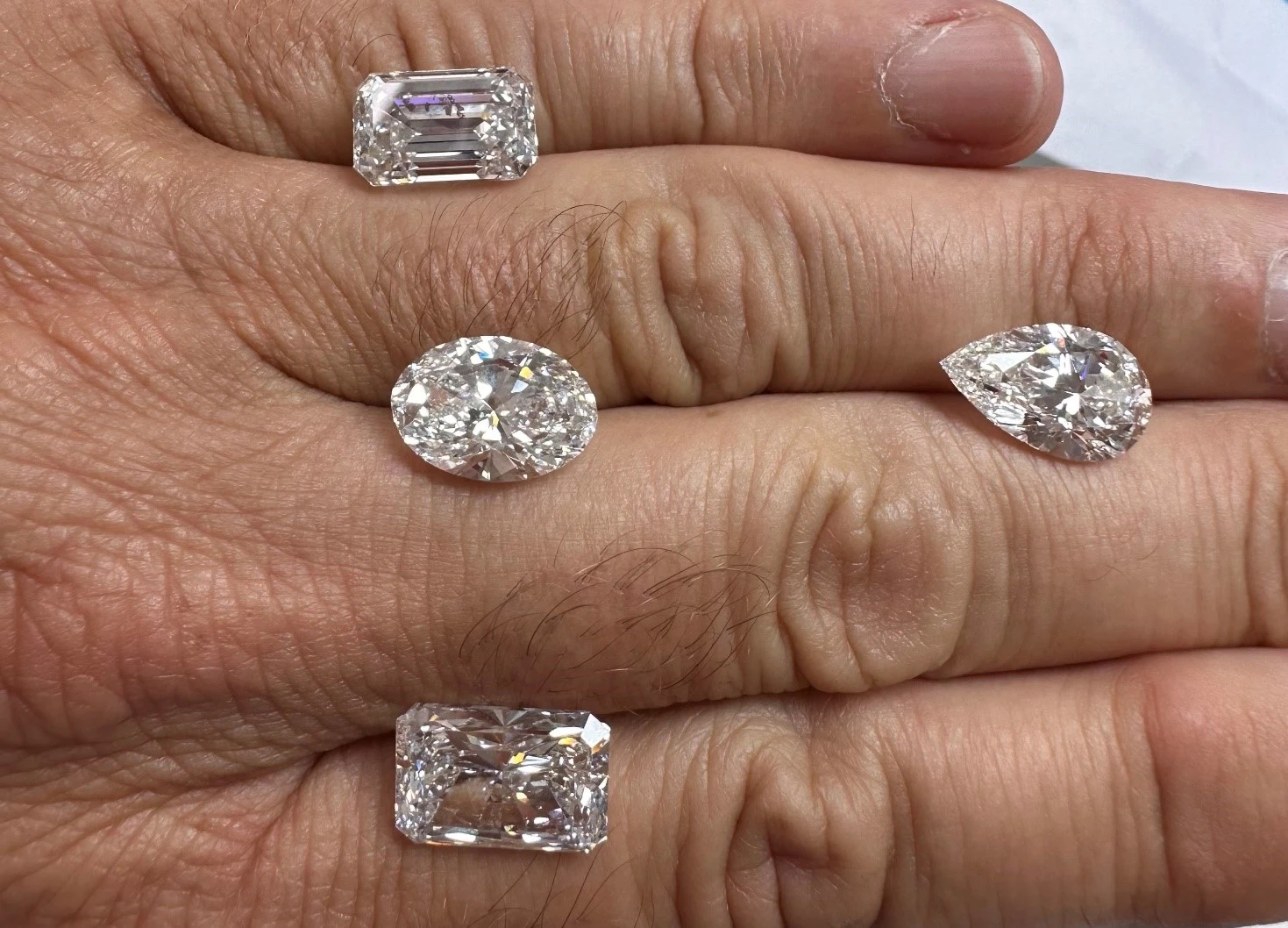Diamonds have long been considered symbols of love, luxury, and prestige. Over the years, they have graced engagement rings, necklaces, and other fine jewelry pieces. However, the emergence of lab grown vs natural diamonds has created a shift in the diamond industry, sparking a debate between lab-grown vs natural diamonds. While both types share similarities, key differences set them apart, from the way they are formed to their impact on the environment and cost.
Table of Contents
The Formation Process: Lab-Grown vs Natural Diamonds
Natural diamonds are formed deep within the Earth’s crust under extreme pressure and temperature conditions. Over millions of years, carbon atoms bond in a crystalline structure, creating the gemstones we see today. This natural process is slow, which is why diamonds are considered rare and valuable.
On the other hand, lab-grown diamonds are created in a controlled environment using advanced technological processes. There are two main methods for producing these diamonds: High Pressure High Temperature (HPHT) and Chemical Vapor Deposition (CVD). Both methods replicate the natural conditions that create diamonds but occur within a matter of weeks, not millions of years. As a result, lab-grown diamonds can be produced more efficiently and are often more affordable compared to natural diamonds.
Physical Properties: Are Lab-Grown and Natural Diamonds Identical?
When comparing lab-grown vs natural diamonds, it’s important to note that their physical properties are virtually identical. Both types of diamonds are made from pure carbon and have the same hardness, brilliance, and fire. They are both rated 10 on the Mohs scale of hardness, making them the hardest known natural material.
Because they share the same chemical composition and crystal structure, it can be almost impossible to differentiate between lab-grown and natural diamonds with the naked eye. Even gemologists require specialized equipment, such as spectroscopy, to detect the subtle differences in their formation process. The overall appearance, durability, and longevity of both diamonds are indistinguishable, which makes lab-grown diamonds a strong competitor in the marketplace.
Ethical Considerations: Lab-Grown vs Natural Diamonds
One of the primary arguments in favor of lab-grown diamonds is their ethical appeal. Natural diamonds have long been associated with environmental concerns and human rights issues, such as the use of child labor and the funding of conflicts, often referred to as “blood diamonds.” Although the diamond industry has made strides in implementing the Kimberley Process to reduce the trade of conflict lab diamonds, issues surrounding ethical mining persist.
In contrast, lab-grown diamonds offer a more ethical alternative. Since they are produced in laboratories under controlled conditions, they do not involve the environmental degradation or labor exploitation often associated with diamond mining. As a result, lab-grown diamonds have become increasingly popular among consumers who prioritize sustainability and ethical sourcing when making their purchasing decisions.
Environmental Impact: Lab-Grown vs Natural Diamonds
The environmental impact of diamond production is another crucial factor to consider in the lab-grown vs natural diamonds debate. Mining natural diamonds can be a resource-intensive and ecologically damaging process. It requires significant energy consumption, the use of heavy machinery, and the destruction of large areas of land. In some regions, diamond mining has led to habitat destruction and the depletion of local water supplies.
Lab-grown diamonds, however, are generally considered more environmentally friendly. Although they require energy to create, the overall impact is less severe than that of traditional diamond mining. Advances in technology are also helping to make the production of lab-grown diamonds even more energy-efficient, with some companies turning to renewable energy sources to power their operations.
Cost: Why Lab-Grown Diamonds Are More Affordable
Price is a significant factor for many consumers when deciding between lab-grown vs natural diamonds. Natural diamonds are rare and have been formed over millions of years, making them more expensive. Their value is influenced factors such as their carat weight, cut, clarity, and color, as well as their rarity. Additionally, the costs associated with mining and distribution contribute to the high price tag of natural diamonds.
Lab-grown diamonds, however, are much more affordable. The production process is more efficient, and the supply is not limited the geological conditions that restrict the availability of natural diamonds. As a result, consumers can often purchase a larger or higher-quality lab-grown diamond for the same price as a smaller or lower-quality natural diamond. This price difference is one of the key advantages of choosing lab-grown diamonds, especially for those seeking a more budget-friendly option without compromising on quality.
Visit our website at novitadiamonds.de to explore our premium collection of diamonds and jewelry. Click the link and discover the elegance today!
Market Demand: Trends in Lab-Grown vs Natural Diamonds
The demand for both lab-grown and natural diamonds continues to grow, but there are notable trends shaping the future of the diamond market. Lab-grown diamonds have gained significant popularity in recent years, particularly among younger generations who value sustainability, ethical practices, and cost-effectiveness. Many consumers are willing to forgo the prestige of owning a natural diamond in favor of a more environmentally friendly and affordable alternative.
On the other hand, natural diamonds still hold a place of tradition and luxury. Many people continue to view them as symbols of status and exclusivity. The appeal of natural diamonds is often tied to their scarcity and the long history of human admiration for these gemstones.
Conclusion: Making the Right Choice Between Lab-Grown and Natural Diamonds
When deciding between lab-grown vs natural diamonds, the right choice ultimately depends on individual preferences and values. Lab-grown diamonds offer an affordable, ethical, and environmentally friendly option without sacrificing quality, while natural diamonds maintain their allure as rare and timeless treasures. Whether you prioritize sustainability, cost, or tradition, both types of diamonds offer distinct advantages, ensuring that there is an option for everyone in today’s evolving jewelry market.




